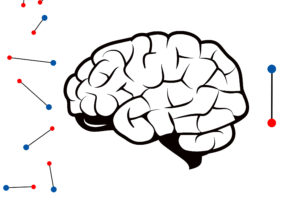I was working for the Department of Defense as an instructional designer; the first time I had ever worked under that job title before. I was fortunate enough to be within minutes of my home and would occasionally take a little time off during the day to spend with my six year old son. One day I decided to take him to see Wall-e, a Pixar movie about a little robot on a trash world.
He and I went to see the movie and he was silent, wide-eyed, and entranced the entire time. We left and he was still silent. As we drove home, I asked him what he thought about the movie.
“It’s OK.” he would reply.
“What thoughts do you have about it?” I would ask.
“I don’t know…”
Trying to develop a conversation with his little mind and gauge his level of comprehension, I went further. “What was your favorite part?”
“I don’t know…” he responded, looking straight forward, still wide-eyed.
Now I was worried there was something else going on. “Did it scare you?”
“No…” he said flatly, giving me nothing emotionally.
We got home, I took him inside and he moved on. His mom asked “Did he have fun?” I reported the conversation and, with some exasperation, said I had no idea how he felt about the movie and the contents. I sighed and went back to work.
I have to check my phone into a cubby at this job, so it wasn’t until after work that I saw I had received a text two hours later about him. There was one picture – he had created an entire Wall-e costume from paper and pen. I was told that he was trucking around the house as Wall-e for the rest of the day, making Wall-e sounds.
Clearly, the movie made an impression. He was Wall-e for several days afterwards, imparting the wisdom he had gleaned from the movie. Not only had he enjoyed the movie, he identified with it. The only way he could express it was by becoming and emulating Wall-e.
I found this rather intriguing. I realized that I had questioned him about his experience much like I had seen instructors and facilitators after learning a new concept – here is a new thing, now tell me what you think. I also remember being a new recruit in law enforcement, and pretty much any other training environment, and having the same responses my son did when faced with an immediate request for a knowledge check: “I don’t know.”
I had heard and read about new concepts in training where learners are provided opportunities to meditate and reflect to process their new information. I totally agreed with this idea, having been on both sides of the experience. The problem I found is that when people are told it is time to “meditate” or “reflect,” they shut down.
“I ain’t into this hippy-feelly-kumbaya-crap.” Would be the salty response of military, law enforcement, and pretty much any training group that has a curmudgeonly alpha in the crowd.
Is the problem the concept then? If people refuse to do it, then it will have the opposite effect. Especially when that one person spouts off and shuts down the class.
I believe, instead that using the words “meditate” and “reflect” are very loaded. I have seen a lot of training where it is in the guides or slides where it says “Let’s reflect on this now” or “Let’s meditate and what we have learned…” like it is adult nap time. People bristle at this and the vocal ones will snipe away, completely decimating the value of it.
I really believe that there needs to be a mental break in training to process information while on location, and not just bio or de-jitter breaks. There needs to be time for people to process what they have just been exposed to; time for them to associate it to their own experiences or background knowledge. I have seen too many training situations that treat people like kindergartners that do not respect or treat them as adult learners capable of complex associations and comparisons. This creates a wedge in learning.
There is also a technique used for generating a discussion to prove a point or introduce a new concept, the “tell me about a time you had a good and bad -insert condition- experience” type of question. We are already comfortable putting people into positions of remembering, associating, and reporting experiences. This tactic can be used to introduce meditate and reflect opportunities, as well. I actually think these types of questions would be more effective as meditate or reflect opportunities.
We can ask them to “take a few minutes to consider what we have just discussed, then jot down on your participant guide how this relates to a previous experience or job you have done before.” Associating a new behavior or knowledge set creates a bridge of relationship that will reinforce the new topic. Tying new training to previous experience cements the new concept in the memory and helps the learner retain the information because now they have a relationship with it.
It is a choice of maximizing the use of time, too. Countless times, we have all seen or been the instructor that asks a question and receives dead silence in return. I have seen more often than not, the instructor become frustrated and start pushing the class to answer. This should not be done. Learners need processing time. Use that dead silence to your advantage, because they are doing the same thing regardless of how the question or prompt is presented – they are processing an answer, making associations, drawing conclusions, and possibly formulating questions.
Choose to turn that “what do you think/how do you feel/etc.” question into a reflection and meditation opportunity, without actually using that terminology. “Take a few minutes to digest what we just learned and then we will discuss it” takes the pressure off of an immediate response and reduces the tension of having to immediately process and perform. It doesn’t always have to be a discussion, either – be creative in how you further entrench the information after meditation and reflection occurs.
Meditation and reflection are essential opportunities for learners to relate to and absorb new information and processes. Using techniques that do not specifically site that meditation and reflection is the key goal will allow for learners to do what they are trying to do throughout the training anyway, process and relate, but in a safe way without pressure of immediate performance.





